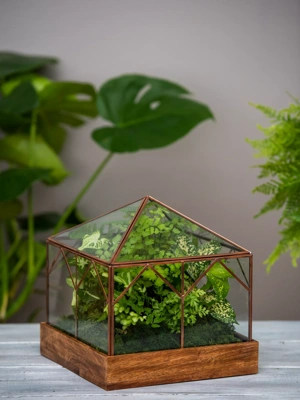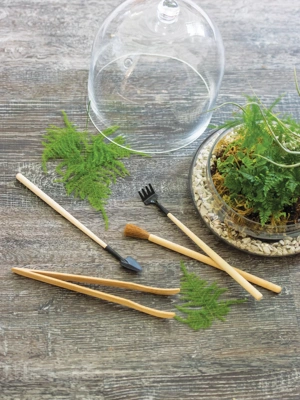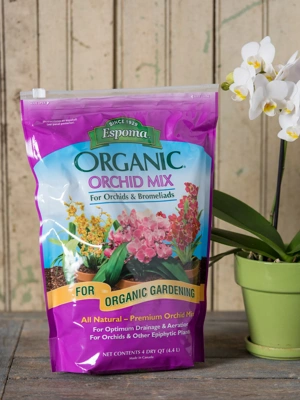How To Grow & Care for Air Plants
 This dramatic air plant requires minimal care.
This dramatic air plant requires minimal care.Anyone out there growing an air plant? These tropical plants are epiphytes, which means they do not root into the ground, and instead cling to trees solely for structural support. They do not harm the trees they are perched in. Tiny scales on their leaves, called trichomes, absorb water and nutrients directly from the air, and even help shade the plant from scorching sun. The plants' "roots" are used only for clinging and do not absorb water and nutrients like earthbound plants.
Best Light and Temperature for Air Plants
All air plants come from tropical climates where cold and freezing never occur. It's important to keep them at temperatures you find comfortable without a sweater — generally from the 60s and warmer. Avoid placing them close to air conditioner vents and cold winter windows.
Air plants do best with at least a few hours of bright, indirect sun daily. Placement within 1 to 3 feet of an east- or west-facing window, or within a foot or two of an artificial light source is ideal. If you keep them well watered, they can have hotter, more direct sun and longer exposure. Avoid dimly lit locations.
How To Water and Fertilize Air Plants
Like other houseplants, air plants have many biological adaptations resulting from millenia of evolving in their native habitat. The appearance of your air plant's leaves can give you clues about how to care for it:
Fuzzy leaves with feathery, white, silvery, and dusty coatings indicate xeric types that come from sunny, dry climates, where rainfall is less frequent. Their pronounced trichomes collect maximum water when it falls and hold it for use during dry periods. They need watering only once or twice a week and can tolerate more sun.
Smooth, glossy leaves are most common on mesic types that come from shaded, moist rain and cloud forests, where water is plentiful. They have less pronounced trichomes and less protection from drying out and hot sun. They need more frequent watering.
The best way to water your air plant depends on the plant, its location and your own preferences. Use room temperature tap or rainwater, but never softened water because the salt in it can damage your plants.
 Xeric air plant
Xeric air plant Mesic air plant
Mesic air plantWays to Water Your Air Plant
Choose the most convenient method for you and your plants:
- Misting is perfect for plants inside globes or displays, and for people who like daily interaction with their plants. Mist three to seven times a week, depending on the type of plant, and try to wet all surfaces.
- Dunking is good for plants that are attached to wood or freestanding, as well as those with dense or very curly leaves that are hard to mist thoroughly. Dip the whole plant briefly into a pan of water or a freshwater fish tank, or put under a running faucet. Use this method two to four times per week for mesic types and once a week for xeric types.
- Soaking helps revive dry plants. Submerge the whole plant for 1 to 3 hours. Use this method once a week or after a period of neglect.
After watering, shake out the excess so that no standing water remains in the center. Let plants dry in a well-ventilated place so they don't remain wet. Water more frequently in air conditioning, hot weather and desert climates, and less frequently in cool, cloudy weather. Tip: When "planting" avoid tucking them into moss that stays damp, which may cause air plants to rot.
Fertilize air plants once or twice a month with a water-soluble orchid or tillandsia fertilizer, following package instructions for dilution. Use the misting or dunking method. These special fertilizers do not contain urea nitrogen, which air plants cannot use. Tip: If your plant is very dry, soak it first, then fertilize it the next day.
How To Style Air Plants

Air plants (Tillandsia spp.) are perfect for craft projects, small-space living, and finally giving brown-thumb gardeners some bragging rights. Because hey do not require soil, they can be tucked just about anywhere: nestled in driftwood crevices, stuffed in to wire baskets with glass baubles, or superglued to stones or wood. Create an air plant terrarium. Place them amongst your larger houseplants, between the leaves or around the base. They make ideal companions for orchids, cactus and bromeliads. Or, just set them unadorned on a windowsill or sunny shelf.
 These air plants are wired to a piece of bark.
These air plants are wired to a piece of bark.Last updated: 05/09/2024
Print this Article:
Related items
Get the Dirt
Stay up to date on new articles and advice. Please fill out the information below.





